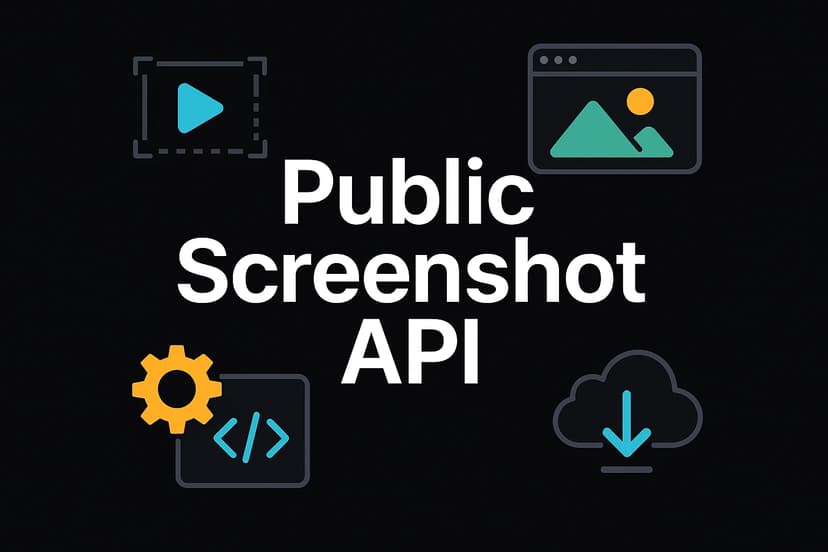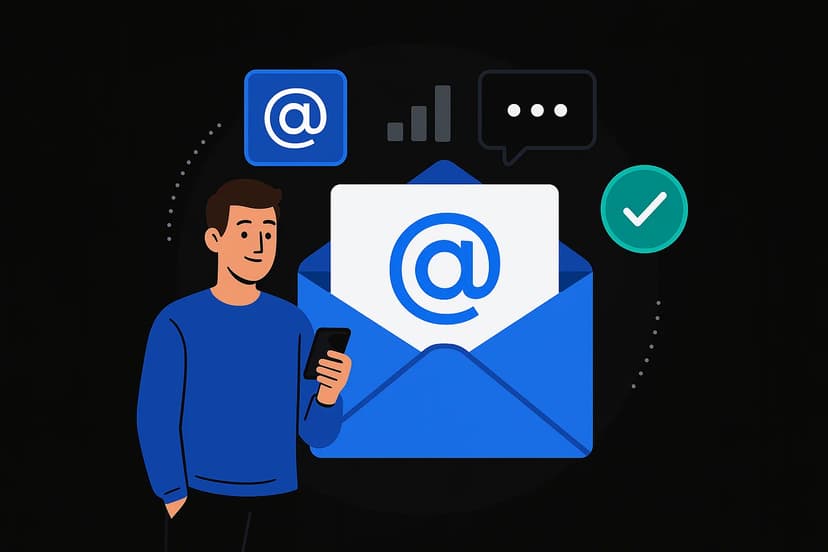You're watching your competitors climb the search rankings while you're stuck because you can't afford $5,000/month for link building.
Every SEO expert tells you the same thing: "You need high-quality backlinks to rank."
But they don't tell you how to get them when your monthly marketing budget is closer to $500 than $5,000.
Here's what they don't want you to know: Some of the most powerful backlinks are completely free.
Backlink exchanges have been quietly helping smart businesses build authority and climb rankings without breaking the bank. While your competitors pay thousands for links, you can build genuine relationships that deliver the same results.
The catch? Most people do backlink exchanges wrong and end up hurting their rankings instead of helping them.
That changes today.
- Backlink exchanges cost $0 but deliver $500+ value per link
- A-B-C method avoids Google penalties while building authority
- SaaS startups excel at exchanges due to collaborative community
- Quality trumps quantity - 5 good exchanges beat 50 bad ones
- Wrong approach can trigger Google penalties
The $50,000 Link Building Problem
Here's the brutal math of traditional link building:
- Agency route: $3,000-$8,000/month for 10-15 links
- Freelancer route: $300-$800 per quality link
- DIY route: 40+ hours/week with minimal results
- Annual cost: $36,000-$96,000 for decent link building
Meanwhile, your bootstrapped competitors are building the same authority through strategic partnerships that cost nothing but time.
The difference? They understand that backlink exchanges aren't about gaming the system—they're about building genuine business relationships that happen to include valuable links.
Why Most Backlink Exchanges Fail (And How to Avoid the Traps)
The wrong way (that gets you penalized):
- Mass email "link exchange" requests to random websites
- Obvious reciprocal links with exact match anchor text
- Exchanges with completely irrelevant sites
- Footer or sidebar links that scream "paid placement"
The right way (that builds lasting authority):
- Strategic partnerships with complementary businesses
- Natural, contextual links within valuable content
- Diverse anchor text that sounds conversational
- Editorial-style placements that readers actually click
At LinkDR, we've analyzed thousands of successful backlink exchanges. The ones that work focus on mutual value, not just mutual links.
The 3 Backlink Exchange Methods That Actually Work
Method 1: Direct Reciprocal Linking (The Foundation)
What it is: Two websites agree to link to each other's most relevant content.
How it works:
- Site A links to Site B's best resource
- Site B links to Site A's most valuable content
- Both links are contextual and genuinely helpful to readers
When to use it: When you have a direct partnership or complementary businesses.
Pro tip: Limit reciprocal links to 10-20% of your total backlink profile to avoid red flags.
Method 2: Guest Post Swaps (The Content Play)
What it is: Two websites publish original guest posts for each other, naturally including relevant backlinks.
How it works:
- You write a valuable guest post for their audience
- They write equally valuable content for your audience
- Both posts include natural, contextual links to relevant resources
- Both audiences discover new, helpful content
When to use it: When you want to build authority AND provide value to new audiences.
The secret: Focus on creating content their audience actually wants, not just content that includes your link.
Method 3: A-B-C Link Exchange (The Advanced Strategy)
What it is: Three websites create a linking triangle that disguises the reciprocal nature.
How it works:
- Site A links to Site B
- Site B links to Site C
- Site C links back to Site A
When to use it: When you want to build authority while minimizing reciprocal link footprints.
Why it works: The linking pattern appears more natural to search engines while still providing mutual benefit.
Why SaaS Startups Dominate Backlink Exchanges
The SaaS advantage: The tech community is inherently collaborative. Founders regularly share resources, write about tools they use, and cross-promote non-competing solutions.
Here's the playbook that works:
Step 1: Identify complementary SaaS tools in your space
- Your CRM partners with email marketing tools
- Your analytics platform works with SEO tools
- Your project management software integrates with time tracking apps
Step 2: Reach out with genuine value
- Don't lead with the link request
- Share how their tool helped your business
- Offer to write about the integration or partnership
- Suggest a collaboration that benefits both audiences
Step 3: Create content that naturally includes links
- Integration tutorials that link to both tools
- Comparison posts that mention complementary solutions
- Resource roundups featuring tools you actually use
- Case studies showing how tools work together
The result: Natural, valuable links that readers actually click and search engines reward.
How to Find Perfect Exchange Partners
Tap Your Existing Network
Start with who you know:
- Business partners you already work with
- Complementary service providers in your industry
- Fellow entrepreneurs in your professional groups
- Clients or customers who run their own businesses
The approach: "We've been thinking about ways to provide more value to our audiences. Would you be interested in exploring a content collaboration?"
Join Strategic Communities
IndieLinks Community: Once you're a LinkDR customer, we'll connect you with our private community of business owners actively looking for quality exchange partners.
Industry-specific groups: Join communities where your ideal partners hang out:
- SaaS founders on Twitter and LinkedIn
- E-commerce entrepreneurs in Facebook groups
- Agency owners in professional associations
- Content creators in niche forums
Use Social Media Strategically
Twitter/X approach:
- Follow and engage with complementary businesses
- Share their content and add valuable commentary
- Build relationships before making any requests
- Look for natural collaboration opportunities
LinkedIn strategy:
- Connect with founders in complementary industries
- Share case studies that mention tools you use
- Comment thoughtfully on their content
- Suggest partnerships through private messages
The A-B-C Method: Advanced Exchange Strategy
Why the A-B-C method works better:
- Appears more natural to search engine algorithms
- Reduces reciprocal link footprints that could trigger penalties
- Creates stronger relationships between three businesses
- Provides more diverse linking patterns for all parties
How to set it up:
Step 1: Find two other businesses that complement yours
- Business A (you): SEO tool
- Business B: Content marketing platform
- Business C: Social media scheduler
Step 2: Propose the triangle partnership
- You link to Business B in a post about content marketing
- Business B links to Business C in a post about social media
- Business C links to you in a post about SEO optimization
Step 3: Coordinate the content calendar
- Plan topics that naturally include the links
- Stagger publishing dates by 2-4 weeks
- Ensure content quality meets everyone's standards
- Track results for all parties
The outcome: Three businesses get valuable backlinks while providing genuine value to their audiences.
Red Flags That Kill Backlink Exchanges
Avoid These Common Mistakes:
Generic outreach emails: ❌ "Hi, I'd like to exchange links with your website" ✅ "I noticed your recent post about email marketing. We've been using [specific tool] you mentioned and love how it integrates with our platform..."
Irrelevant partnerships: ❌ Pet food company exchanging with cryptocurrency blog ✅ Dog training service exchanging with pet insurance company
Obvious reciprocal patterns: ❌ Every link you give gets a link back within 24 hours ✅ Natural timeline with varied content and genuine editorial decisions
Low-quality content: ❌ 300-word guest posts that exist only to include links ✅ Comprehensive resources that readers bookmark and share
What Success Looks Like
Maria's SaaS Startup (project management tool):
- Partnered with 5 complementary SaaS tools
- Created integration tutorials and comparison posts
- Result: 15 high-quality backlinks, 40% increase in organic traffic
- Cost: $0 (just time investment)
David's E-commerce Agency:
- Exchanged guest posts with 8 complementary service providers
- Published case studies featuring tools they actually use
- Result: 22 contextual backlinks, 60% improvement in local search rankings
- Cost: $0 (leveraged existing relationships)
Sarah's Content Marketing Consultancy:
- Organized A-B-C exchanges with design and development agencies
- Created comprehensive resource guides
- Result: 18 natural backlinks, 25% increase in qualified leads
- Cost: $0 (pure relationship building)
The Cost of Not Doing Backlink Exchanges
While you pay for expensive links, smart competitors:
- Build genuine partnerships that generate ongoing opportunities
- Create content collaborations that expand their audience
- Develop industry relationships that lead to referrals and joint ventures
- Establish authority through association with respected brands
Every month you delay:
- Potential partners form relationships with your competitors
- Your link building costs continue draining your budget
- Competitors gain authority through strategic partnerships
- Your organic growth stagnates while others advance
Take Action Today
Ready to Start Building Strategic Partnerships?
Join LinkDR and get access to our private IndieLinks community where business owners actively seek quality exchange partners.
Our platform also helps you:
- Identify potential partners in your industry
- Track your backlink profile to maintain healthy exchange ratios
- Manage outreach campaigns for partnership building
- Monitor results from your exchange efforts
Start Your First Exchange This Week:
- List 10 complementary businesses you already know and respect
- Research their content to understand their audience needs
- Craft personalized outreach focused on mutual value
- Propose specific collaboration ideas that benefit both audiences
- Track results and optimize your approach
Need Help Finding Partners?
LinkDR's IndieLinks community connects you with:
- Verified business owners looking for quality partnerships
- Industry-specific groups for targeted exchanges
- Collaboration templates that get positive responses
- Best practice guides from successful exchange campaigns
The Bottom Line
Backlink exchanges aren't about gaming Google—they're about building genuine business relationships that happen to include valuable links.
Done right, they cost nothing but deliver the same authority benefits as expensive link building campaigns.
Done wrong, they can hurt your rankings and waste your time.
The businesses winning with backlink exchanges understand that the best partnerships provide value to all parties involved, not just link juice.
Ready to stop paying thousands for links you can get through strategic partnerships?
Start your LinkDR trial today and join the IndieLinks community where smart business owners are building authority through collaboration, not cash.
Remember: The most valuable backlinks aren't bought—they're earned through relationships that provide genuine value to real people.
Your next great partnership is just one conversation away.



